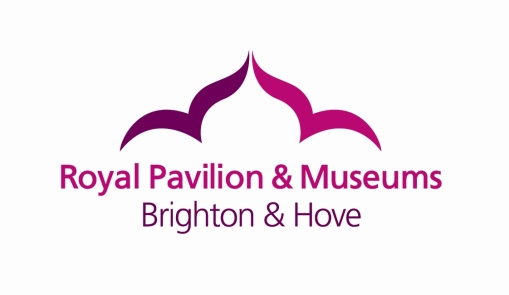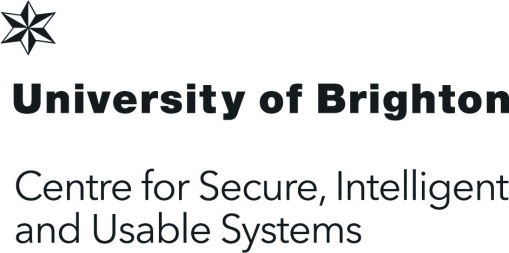Re:Animating Artefacts
An HLF Project in collaboration with the University of Brighton and The Royal Pavilion Gardens & Galleries of Brighton Museums.
RE:ANIMATING ARTEFACTS-The story of Asante Gold weights project.

Evaluation and Monitoring report.
Inputs Outputs Outcomes-Impact
What resources are going in from the beginning of the project comprised of hours worked to create an advert to be distributed to our members on our mailing list. Activities Participation Short Medium Long
More hours worked to create waiting list. Designing of a suitable advert using existing templates and language to explain the reasons and aims of the project.
An interest was created and had a very positive response and interested parties were put on a waiting list.
Telephone and email to contact potential volunteers Telephone interviews to check on availability and eligibility of the interested parties. Long term commitment for the duration of the project eliminated at least 50% of the interested parties.
Email contact & Telephone numbers.
Childcare and travelling expenses explained as an initiative to allow flexibility and reward for attendance.A number of interested individuals had appointments or holidays booked on those yet to be confirmed days.
Email correspondence with the museum and University on training days. Dates booked for training sessions and have 3 members of staff from each organisation as facilitators/Supervisors
Meeting with the Museum,University and DL travelling expenses and refreshments cost
Time and venue cost is in kind Support. How to manage the sessions and the facilitators(3),material example of end products for educational purposes Box kits from the Museums Education department,equipment to be used per session.
Venues for the sessions both at the Museum and University. All the seven volunteers participated in the training sessions from the Museums and the University staff.
Training sessions
Time and in kind support.
Travelling expenses,Child care for volunteers and refreshments. First sessions was an introduction to 3D printing and the equipment used was a typical camera for scanning with a tripod to steady the camera.
After this session the volunteers were able to handle the special camera on covering all the links within 3 D printing in order as to join up the images to create a 3D model. These skills were the basic requirement to advance further into additive manufacturing.
Museum curator trained the volunteers a professional fee was paid.
The venue hire and the objects are provided as an in kind support.
Second Session was the handling and cataloguing of objects in the museum’s vaults. Skills,experiences and knowledge in the use of gloves to minimise wear and tear and avoid contact with potential toxic substance so it is a two way safety from the objects and to the objects.
Third and all the other sessions were held in the University of Brighton’s Cockcroft house Department of Computing and Mathematics in the Centre for secure ,intelligent and usable systems. Due to varying availability among the volunteers an increase in sessions was needed in order as to pass them off as competent this stretched the budget and made it quite difficult to work within the stipulated funds this is one fact that future projects will need to take account in depending on volunteers solely for delivering a project.
 : Our theory was to make some of the valuable and delicate objects easily available to the public. We managed to enlarge the artefacts so that the intricate craftsmanship used in creating the originals could be easily seen in the replicas.
: Our theory was to make some of the valuable and delicate objects easily available to the public. We managed to enlarge the artefacts so that the intricate craftsmanship used in creating the originals could be easily seen in the replicas.
External factors: although we achieved our aim the Museum was keen to see how we can create merchandise from the objects with true colours and subsequently sale on the Museum shop but the cost of 3D printing metal was something the project could not do with the funds available. Other organisations like the Alzheimer’s/ Dementia groups were keen to explore possibilities of using objects and music to stimulate long forgotten memories. The Royal Society for the blind also saw the potential of using our project for future ventures.
This logical framework approach towards different activities especially the advertising for volunteers, did not materialise a huge interest from committed and available individuals , the training sessions although accredited and is part of the initiation for a competency standard in handling objects in the Museums, and also for the 3D orientation and introductory course, the turn out did not come to our expectation ,maybe we should have explained it further in the recruitment flyer so the volunteers would have been aware of it’s value ,and when setting links between expected outputs and actual activities more details should have been invested in determining the possibilities of drop outs, and none participation from the volunteers, or taken into consideration the availability of the majority of the volunteers.
Especially when getting a quorum for volunteers to visit a museum in London all efforts were thwarted as no date was suitable for the majority of them,eventually the facilitators had to arrange for at least a visit to the designated venues which defeated the purpose as the whole point was to enhance the experience of all the volunteers.
The focus group which included the volunteers and facilitators from both the University of Brighton and Brighton Museum managed to have an in depth look at the way the project was designed,managed and delivered and we did get positive feedback from all of them especially during the initial planning stage arriving at a mutual understanding on the dates to meet up and organise the workshops. This was done through email and text and we eventually agreed on a date where all of us could attend.
We met up and discussed the various strategies and logistics to perform well in holding the workshops.
We came to an agreement that the training for Handling,cataloguing and Curating objects should be done at the Brighton Museum and the 3D printing on Campus at The Moulsecoomb Centre for Secure intelligent and usable system in the Department of Computer and Mathematics at University of Brighton.
This meeting was followed up by requesting the volunteers to take up an online booking portal that will enable us to know who will be available on which dates as the criteria was for the volunteers to be accepted to participate they should be able to attend both sessions.
This proved quite challenging as most of the interested participants could not commit to the chosen dates or some could do only one of the two this meant the majority of them were unable to be recruited this drastically dropped our numbers and we eventually ended up with only 7 committed volunteers who successfully achieved a letter of competency and acknowledgement from both the Museum and the University as a thank you for their participation.
Decisions and aims achieved enabled us to ensure that the Heritage was identified and better explained through the Project’s efforts in Digitising through 3 D printing valuable collectible artefacts that from now on can be displayed in the Museum with information cards that will be accessible for hire to schools and community groups. An online portal is available to download and even print the artefacts.
All the Volunteers are now able to successfully pursue a project that they are passionate about that involves the use of 3D printing as that have been trained and have been signed off as competent and that means they can gain access to the Museum artefacts and also make use of the state of the art equipment in the University.
We are also able to get feedback from visitors to the Museum on the popularity of the New displays and the number of requests for the educational Box kit.
During the course of the project visually impaired individuals, Alzheimer/Dementia(A/D) patients and institutions have shown a desire to engage with our aims of making more objects and artefacts 3D printed to enhance their experience when visiting the museum and also to trigger memory among the A/D but the best one was to enable the children to touch,feel and play with the replicas without any fear of damaging them!
Our other objective was also to monitor if the footfall to the Museum will be increased by having this new display which will also create souvenirs that can increase the variety stock in the. Useum shop.
Diversity Lewes will now have Skilled volunteers who we can use for future projects and we will have a resource through the Educational Box Kit that members of the community can hire and we can hold talks on heritage in schools and other institutions.